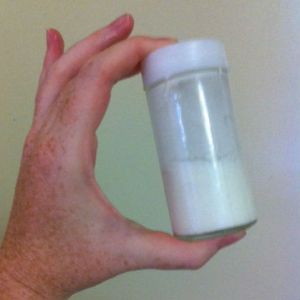Since digital / e- / iPad storytimes are becoming a regular service that many libraries are providing, including my own, I wanted to take a little time to explore the issue on my blog.
When first thinking about using iPads, ebooks, and apps in storytime part me wondered: what was the need for it (from an early literacy perspective rather than a digital divide one)? While this is an area where much research is currently being done, I just felt like we didn’t know yet what the implications for early literacy were. Children are already exposed to so much media, do we really need it in storytime as well? Shouldn’t it be alright for library storytime to focus on print books and stories? If children 2 and under should have no screen time, and children over 2 should have limited screen time, isn’t storytime the perfect place for a digital break? Are we trying to embrace iPads just because they are sexy, rather than because they offer real benefits?
But just because something makes me uncomfortable, doesn’t mean I don’t want to learn more about it. Like any good researcher, I want to collect my facts before making a decision. So I talked to other professionals. I attended many different trainings on how to use the iPad in storytime. I read blog posts. I tried to see the issue from both sides.
And I started seeing a different way of looking at iPads and storytime use. Parents are already using iPads with their youngest children. I am sure we have all seen a time when an iPad was used as a babysitter — entertaining a young child while a parent was getting something done. And you know what? That’s okay. It is not my place to judge parents. Parents have busy lives and use the tools at their disposal. But if parents are using this technology why not show them that it can be MORE than a babysitter?
We already model how to interact with books in storytime. I often feel, especially with my infant storytime, I feel like that’s the main reason I’m doing it. Yes, the infants are receiving a benefit from storytime, but parents are seeing examples of great books for their children. They are seeing how to do dialogic reading — even if they have no idea what it is called. They are learning how books are starters for conversation or related activities like songs and fingerplays.
So why not do the same with ebooks and apps? Why not show off wonderfully produced, educational apps the same way we highlight great books? Why not model how an app can be a starting point for conversation and learning with children?
In addition, apps cost money. And there is no place really to “try before you buy”. Yes books cost money as well, but it is easy enough to read through a picture book before deciding to purchase it. And there are so many apps out there. Of course, plenty of places review apps, but it is often best to decide after seeing them in action The library can help with this as well, by bring attention to really good, useful apps.
And when I saw using apps in this way, it began to make more sense to me to use them in library programming. Another thing helped me be more okay with iPads in storytime was when my library was discussing offering them as a service we decided to develop an eStorytime separate from our traditional storytime, rather than including the iPads in our current storytime program. We have our traditional storytime, that runs once a week, and then we added a monthly storytime were we focus on apps and ebooks. Soon, this may seem like a ridiculous and artificial division, but it helped me get my head around trying something new while still remaining faithful to a tried and true ideal. Also, some parents in our community don’t want their children exposed to screen time — having separate programs allows us to accommodate both.
To some extent, I still think I am making my mind up about iPads and storytime. I am interested to see what we learn from research about their use and early literacy. But I’m also ready to try out some new ideas. And you know what? I just presented my first eStorytime today and it went pretty well. Both parents and kids found it fun, engaging, and were exposed to some new-to-them high quality apps. And I can’t help but think that’s a good thing.
You’ll start to see my eStorytimes outlines being posted on here. I hope you find them useful if you are thinking of starting your own digital storytime, already have one at your library, or just want to find some new fun apps to share with kids.
As always, please feel free to continue this conversation in the comments. I would love to hear what you have to say about iPads, apps, storytimes and libraries.







































